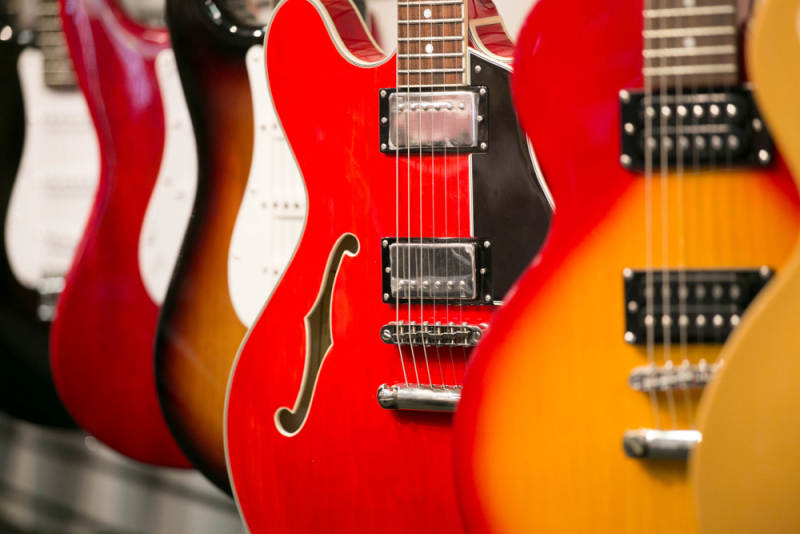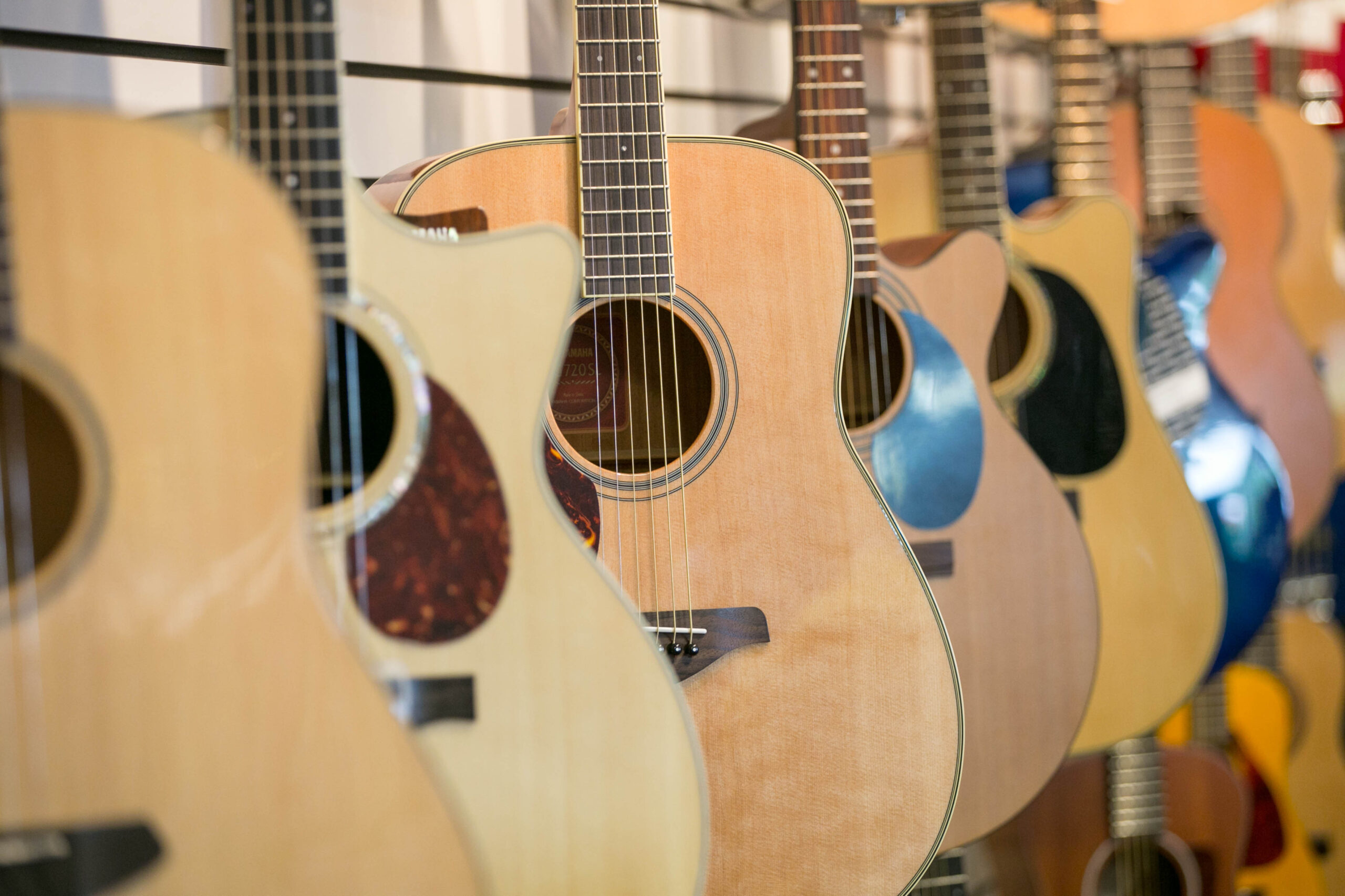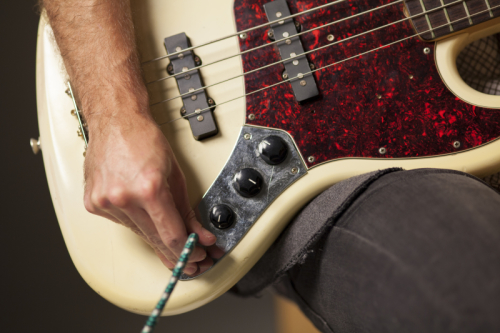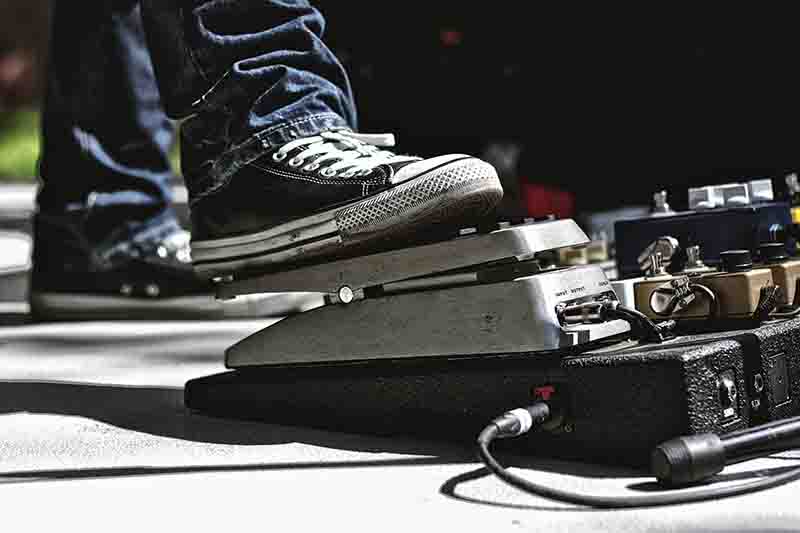April 09, 2015
Electric Guitar Buyer’s Guide


Buying Your First Electric Guitar
Choosing the Right Electric Guitar Model
Whether you’re buying for yourself or for a loved one, purchasing a new electric guitar is an exciting experience. From the moment you plug it in to the first chord you strike, it’s a moment that signals the beginning of a musical journey that could last a lifetime. Of course, it’s for this reason any musician’s first electric guitar should be given careful consideration. Thankfully, a model that’s both affordable and a reflection of one’s personal tastes is very easy to find. Within this section, we’ll go over a few things that you should look for in an electric guitar, so you can be sure that the first choice you make is the right one.
Electric Guitar Parts 101
Before we begin, let’s take a look at the electric guitar’s various components. You might already recognize some of these terms, but it never hurts to familiarize yourself with the instrument before you make any decisions.
Finding A Model That Suits Your Budget
Buying an electric guitar that looks, sounds, and feels great doesn’t have to mean emptying your bank account. If you’re purchasing an electric guitar for a beginner, you’ll be happy to know that many of today’s top guitar manufacturers offer excellent entry-level models.
Under $300
In this price range, you’ll find plenty of electric guitar options that are designed specifically with beginner guitarists in mind. In fact, many of the more well-known guitar companies offer value packs that contain everything a novice player needs to start playing, including a cable, amp, strap, picks, and CD-ROM music lesson.
$300 – $700 Price Range
Electric guitars in this price range are typically for intermediate players, and compared to guitars under $300, you’ll definitely find more quality options available. Naturally, these guitars have better tonewoods, and they’re also more customizable if you decide to upgrade your instrument as your skills improve. To get the most out of a guitar at this cost, it helps to budget around $100 for accessories. You might also want to consider investing in a quality amp with a bit more bite compared to the smaller practice amps typically included with beginner value packs.
$700+ Price Range
Of course, guitars in this price range are designed specifically to meet the demands of the pros. From their playability to their sound quality, these guitars are crafted with premium components and the finest woods and materials.
With all this in mind, it’s important to remember that purchasing a less-expensive model doesn’t necessarily mean you can’t enjoy playing it for countless years. Many factors can determine a guitar’s price, including how it’s made, and what country it was made in. To play it safe, just remember that certain guitar brands have a strong reputation for a reason, and anyone from Music & Art’s team of experts would be glad to point you in the right direction.
Different Body Types
Electric guitars come in three basic types: solid body, hollow body, and semi-hollow body. Each of these types have their own characteristics:
Solid Body
When you think of an electric guitar, you’re most likely thinking of a solid body model. They’re the most common electric guitar body type after all, and they come in a variety of styles. Usually, the sound of a solid body electric guitar is very much determined by the wood it’s made from.
Hollow Body
Similar to an acoustic, this type of electric guitar (like its name suggests) has a body that’s hollow. Producing a fuller sound than a solid body guitar, hollow bodied electric guitars are known for their rich tone and deep bass, which often makes them preferred by jazz guitarists.
Semi-Hollow Body
Last but not least, semi-hollow body guitars are also known for their bold, full sound. The difference lies in their design, which consists of a solid center wood block. The addition of this wood allows the guitar to “ring out” longer (also known as “sustain”), and it also cuts down on feedback. Semi-hollow body guitars are a great balance of attack and warmth, and their versatility makes them popular with blues musicians, jazz players, and even punk rockers.
Electric Guitar Parts – A Closer Look
In regards to the various components that make up the electric guitar, there are a few parts that should be looked at more closely since they’ll play a major role in how your guitar will feel and sound.
Pickup Types
If you have a favorite guitarist in mind that has a sound you’d like to replicate, you’ll definitely want to figure out what type of pickups they use. Pickups, along with the guitar’s body style, will have the biggest impact on your instrument’s resulting tone, and the two basic types are single-coil and humbucker.
Single-coil pickups use a single magnet that’s wrapped with fine wire. This combination creates a magnetic field that converts the strings’ vibrations into an electronic signal. Known for their bright and crisp tone, single-coil pickups have been used by many iconic guitarists, including Jimi Hendrix, Jeff Beck, Eric Clapton, and Keith Richards.
On the other hand, humbuckers consist of two single-coils wound together. This design was created to combat the “hum” that single-coil pickups commonly produce. Typically, humbuckers are used more often in louder genres like heavy metal, due to the thick and powerful tone they’re capable of providing. In fact, influential artists like Dave Mustaine and Eddie Van Halen are well-known for their humbucker tone. With that in mind, humbuckers are also very versatile, and many jazz guitarists prefer them as well.
Neck Types
Depending on the guitar maker, necks vary considerably from model to model. The simple truth is that every guitar player has their own neck preference, but understanding how a neck’s profile and width can affect a guitar’s playability will make your search for the perfect axe a whole lot easier.
The three general neck types are bolt-on, set, and neck-through:
Bolt-on necks use a bolt (as the name suggests) to attach to the guitar’s body. Typically a more affordable method of construction than set necks and neck-through guitars, bolt-on neck types also allow for easier replacement and repairs. The Fender American Stratocaster is an excellent example of a bolt-on guitar.
Set necks (sometimes called “set-in” necks) are set into the guitar’s body, then glued into place. This is a very common neck type, and an ideal example of this style can be found on Gibson Les Paul’s.
Neck-through guitars have a neck that’s usually laminated, and extended through the entire length of a guitar’s body. For additional sustain, neck-through guitars also have “wings” glued to the body’s sides. This neck type is very commonly favored by metal guitarists, which is why companies like Jackson often incorporate this method into their models.
Another thing to consider is your guitar neck’s width. After all, necks come in a variety of shapes, including thin, wide-thin, and C-shaped, and the right shape for you will depend on your own physical traits, including the size or your hand, and the length of your fingers. Again, this will vary from player to player.
Hardware Types
As mentioned earlier, the cost of an electric guitar will come down to a few factors, including the quality of its hardware. Various styles of hardware are used in the design of electric guitars, but over anything else, the most important hardware components are tuning machines, bridges, and tailpieces. Your guitar’s versatility and tuning stability will very much depend on the quality of hardware used for these three parts, so let’s take a look at each one:
Tuning Machines
Typically found on your guitar’s headstock, tuning machines (also known as “tuners”) are responsible for holding your strings in place, and allow you to tune the instrument by adjusting the tension of each string. Some guitar models even have tuners that are designed to lock in place, and this additional bonus provides extra tuning stability, makes changing strings easier, and ensures the strings don’t slip. However, most beginner guitar models do not have the lock-in tuner feature.
Bridges
Your guitar’s tone and playability will be very much influenced by your bridge. A guitar’s strings are routed through your bridge, which is attached to the lower portion of your guitar’s body. The bridge is essential to the instrument’s tone because the string’s vibrations move over it, which is what produces the projection of sound. Bridges also play a significant role in a process known as intonation, which involves adjusting your string’s length to bring each string into tune along the fretboard.
(Note: Intonation is crucial to check on any electric guitar before you purchase it, since the guitar won’t be able to stay in tune if the distance between the frets is off.)
The two main bridge types are stop-tail and tremolo. Stop-tail bridges are fixed into the body, and make for more stable tuning. On the other hand, tremolo bridges contain a vibrato bar (sometimes known as a “whammy bar”) that allows to bend your strings, and alter the pitch of each note played. These types of bridges are often used by instrumental surf-rock groups like The Ventures.
Tailpieces
After the strings are routed through your bridge, they will then wrap over (or peg into) the tailpiece. The tailpiece’s job is to anchor the strings. For this reason, tailpieces need to be strong in order to combat the tension of the strings… otherwise, the strings would fly off. Since the bridge and tailpiece work so closely together, there are several different bridge-tailpiece systems available. A few popular bridge-tailpiece systems are:
- Tune-o-matic – This is a common style that allows for adjustment of strings heights and individual intonation.
- Bigsby – Seen on many vintage-style guitars, this spring-loaded vibrato is large, and has a rotating bar that all of the strings attach to.
- Locking vibrato – Sometimes known as the Floyd Rose B ridge (named after its inventor), this system provides height adjustment and individual intonation. Also spring-loaded, the Floyd Rose Bridge holds strings into tune exceptionally well.
Of course, there are many other bridge-tailpiece systems available, and like anything, a little bit of research will ensure you choose a guitar that perfectly represents your own tastes and preferences.
Essential Electric Guitar Items and Accessories
Along with the instrument itself, you’ll require a few other things to round out the electric guitar experience:
Amplifier – An amplifier is one of those key ingredients that is required to make the electric guitar work. How are you going to hear your awesome playing without one? Amplifiers come in many shapes and sizes; once you finish with this guide, check out the Amplifier Buyer’s Guide for some great info on beginner amps.
Cable – The instrument cable is the other very important piece to make your electric guitar setup function. Without one, you really just have two rather expensive ornaments. Don’t worry: cables are a relatively inexpensive accessory.
Picks – While picks aren’t required, they’re very highly recommended by teachers and players. Most electric guitar players use guitar picks, and frankly, you’re not truly rockin’ until you know how to use one.
In addition to these items, you’ll want to consider the following accessories to ensure the guitar is properly maintained when it’s being played, and that you’re comfortable, in tune, and improving your craft:
Tuner – While some amps (and even modern guitars) have built in tuners, it’s always worth having a tuner in your case. If you’re not in tune when you’re practicing, especially when you’re new to the guitar, everything you play sounds out of tune. Long story, buy a tuner.
Guitar Strap – Guitar straps are important for players that are playing live shows (or eventually want to). They serve two primary purposes: allow you to stand up while playing the guitar, and help you look really cool while doing it.
Guitar Stand – whether you’re playing live for an audience or your bedroom, a guitar stand is a great buy for several reasons. First, when the guitar is out of the case and all ready to play, you’re much more likely to practice than you are if it’s all packed up. Second, if you stop practicing or playing on stage, odds are you’ll lay it on a bed, chair, table or worse yet, the floor, and if the neck doesn’t warp naturally from not being properly supported, it’ll get stepped on.
Hard-shell Case – Notice we called out a hard-shell case versus a gig bag. While gig bags are less expensive, a hard case will do a MUCH better job protecting your investment. If you’re going to spend hundreds of dollars on a guitar, it’s definitely worth spending the extra few bucks to get the hard shell case. Just make sure you check the size and type of your guitar and match that to the hard case you’re buying.
Extra Strings – You will break a string. We don’t wish that on you, but nevertheless, you will break a string. When that happens, you can’t practice or play until it’s fixed, and waiting for FREE shipping from Music & Arts or finding the time to visit a local store still takes time. Having that extra set of strings will let you keep practicing and playing on your schedule.
Instructional Book – Teaching yourself guitar can be a difficult process. If you’re determined, you need every resource available to you. While YouTube can help, it doesn’t teach you the knowledge behind the notes, and will make it harder to learn when you get to a more advanced level. Get a good method book and start there. Books with CDs/DVDs are easier to learn with because you can hear what the exercises are supposed to sound like.
Music Lessons – Want to get better faster? There’s no better way to progress than learning to play the right way from a professional lesson instructor. Music & Arts has the largest private lesson program in the country, and guitar lessons everyday in most cities in the US. Click here to learn more about music lessons.
Electric Guitar Buying Guide Checklist
So to wrap things up, the main things you should be looking for in an electric guitar are:
- Body Type – Solid body, hollowbody, or semi-hollow?
- Pickups – Single-coil or humbucker? Both have their own unique characteristics.
- Neck type – Thin, wide-thin, or C-shaped? Bolt-on, set neck, or neck-through?
- Hardware quality – From the tuners to the bridge and tailpiece, these three main hardware components will greatly influence the play-ability of your guitar.
- Intonation – Ensure each note stays in tune as you move up the guitar’s neck.
Now that you have an idea of what to look for in an electric guitar, feel free to dive in and explore the many options available to you through Music & Arts. We hope this guide has helped you in making your decision easier, and when you’re all set and ready to rock out, remember that playing music is supposed to be an enjoyable experience, so have fun!
Return to Buyer’s Guide Home Page







